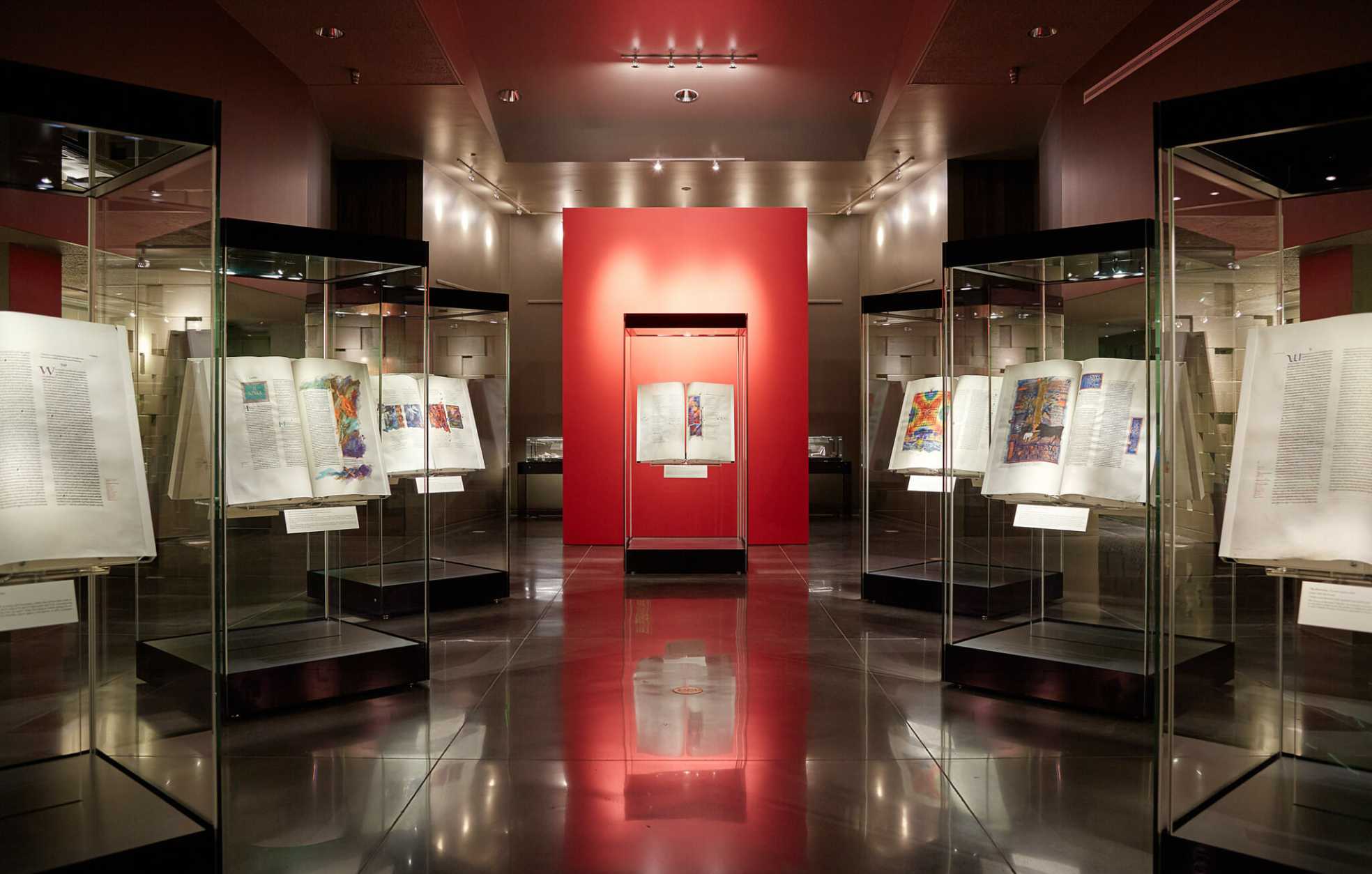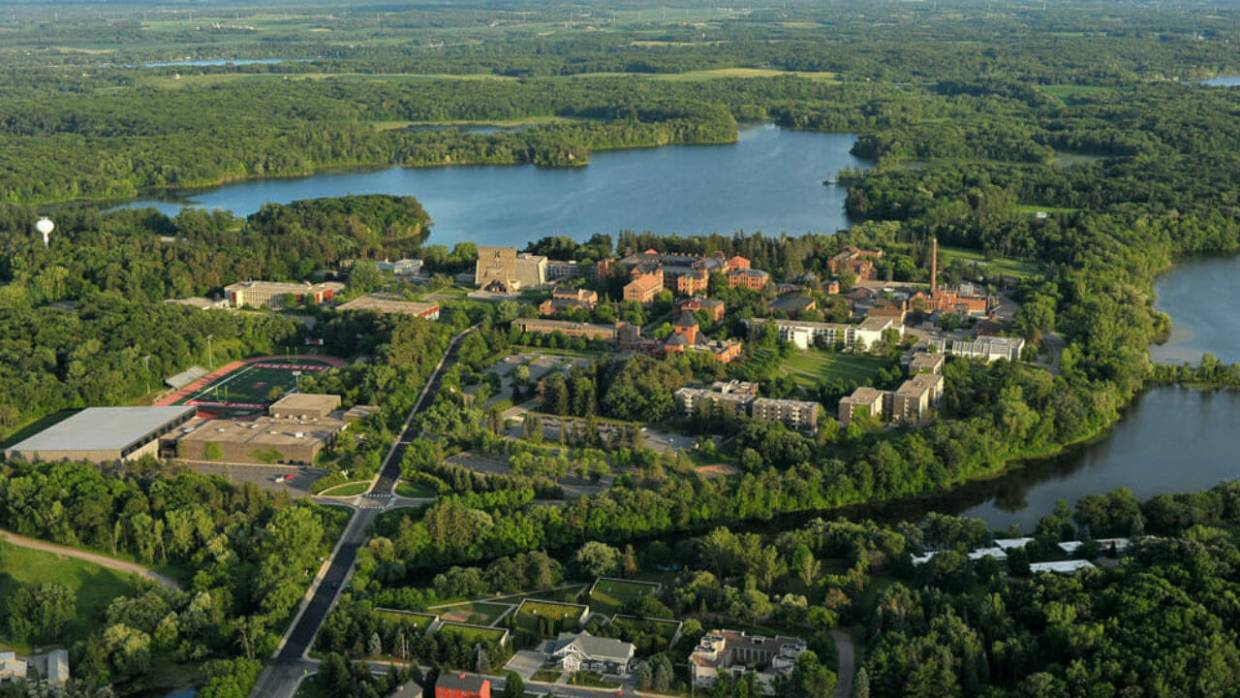Our 2-Day Workshop Explores How to Make the Most of the Heritage Edition
Learning how Donald Jackson made the Heritage Edition true to the original and how communities share these works of art
The possibilities for enhancing faith outreach with The Saint John’s Bible are nearly infinite. We believe that the more communities are informed about the creation of this Bible, the better they can use it to complement their mission. To ignite each community’s spiritual imagination, we offer several educational opportunities, including complimentary literature and guest lectures from The Saint John’s Bible team. Our Workshops, one of our most engaging educational offerings, bring together hosts and owners of the Heritage Edition for a firsthand look at how The Saint John’s Bible was made, carefully replicated and used to reach communities across the world.
Gathering to Hear the Story
We recently hosted representatives from California, Texas, Minnesota, New York, New Mexico, and Ohio for a two-day workshop on the Saint John’s University campus in Collegeville, Minnesota. Participants arrived in the afternoon for optional Mass in the Saint John’s Abbey Church followed by a Welcome Dinner in the Great Hall. It was built between 1879 and 1882 and is known for the distinctive mural in the apse painted by Benedictine monk Clement Frischauf, notable because this artwork is referenced in The Saint John’s Bible. Fr. Michael Patella, OSB, who chaired the Committee for Illumination and Text for The Saint John’s Bible joined us for dinner and shared personal antidotes of how the very idea of illuminating a Bible in the modern era was introduced (hesitantly for some), embraced and set into motion.
After dinner, participants gathered at the Abbey Guesthouse for fellowship and evening accommodations. Nestled on the serene shores of Lake Sagatagan, this modern facility is comfortable but simple, with minimal distractions from the beauty of nature and a focus on self-reflection. Brad Neary, Director of The Saint John’s Bible Heritage Program, fondly refers to the Guesthouse’s accommodations as “monk chic.”
Longevity, Quality, Forward Thinking and Hospitality
The next day begins with breakfast followed by optional morning prayers at the Abbey Church. The day continues with two sessions: The Saint John’s Bible Immersion and the Heritage Edition Deep Dive. While not a standard part of the Immersion session, June’s visitors had the rare opportunity to visit the climate-controlled vault where the original manuscripts of The Saint John’s Bible are stored and then explore the permanent gallery in the Hill Museum & Manuscript Library featuring 28 original folios.
Tim Ternes, director of The Saint John’s Bible, explained the founding principles guiding each aspect of this project: Longevity, Quality, Forward Thinking and Hospitality. He shared the fascinating back story of how the Word and artwork were coordinated—from the development of hand-selected calfskin vellum, creation of an elegant new script, and use of historic Chinese inkstones to how the pages were planned, penned and illustrated. Every aspect of production has been archived in the vault from the quills used to gold leaf remnants, each element contributing to this sacred tapestry of scripture.
The second session, the Heritage Edition Deep Dive, offers a unique look into the creation of the 1,150 pages with 160 major illuminations across each of the 299 editions of the seven-volume Bible. Like the original manuscripts, immense planning and care, under the direction of Donald Jackson, was undertaken on every detail of the Heritage Edition, from the selection of a Heidelberg press and creation of a custom cotton paper to the use of sandpaper to emulate the original illumination and binding with Italian calfskin and handsewn crowns.
Best Practices and a New Way to Connect with Participants
What follows in the afternoon is a sharing of best practices. This includes care and use guidelines and a discussion of the most effective ways to share this incredible expression of art and scripture. One of the most effective ways we have found to experience the Bible is through the use of lectio divina and visio divina, in which audiences examine the art and scripture of The Saint John’s Bible as living expressions of God’s word. Dr. Barbara Sutton, professor of theology at Saint John’s School of Theology, led the group through this engaging experience.
Jeanne Dittmann of Baylor University and the Waco Calligraphy Guild had followed The Saint John’s Bible project during its development and was still impressed by her experience at the workshop. “Being here at Saint John’s University … seeing the actual document in its vault and all of the care that’s gone into not just the artistic creation but the academic, scholastic and theological creation of this masterpiece just really indicates to me how impressive this project is – even more than I’d imagined,” she said. “I’m so grateful that Baylor now is a part of the mission of The Saint John’s Bible.”

To better connect with hosts, owners and program participants, we have recently created an online community through Discourse. This is a forum where groups can share ideas, ask questions or offer topics that can help the Heritage Edition resonate with their community. We are especially excited about this format as it allows participants to ignite the imaginations of educators, health care providers, libraries and museums and religious institution around the world. (If you are a current Heritage Program participant and would like an invitation to community.saintjohnsbible.org, please contact us at sjbheritage@csbsju.edu.)
Our communities have described the Heritage Edition Workshop as awe-inspiring. Learning about the creation of the Heritage Edition in such rich detail forms a connection to the physical pages and sparks outreach ideas that communities may not have considered before. The seven volumes of the Heritage Edition were designed to carry out the four founding principles. In fact, the very definition of “hospitality” shares much in common with the ways hosts and owners use The Saint John’s Bible: “the friendly and generous reception and entertainment of guests, visitors, or strangers.”
For more information on the Year With The Saint John’s Bible program, click here or contact sjbheritage@csbsju.edu.


